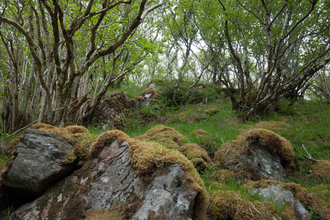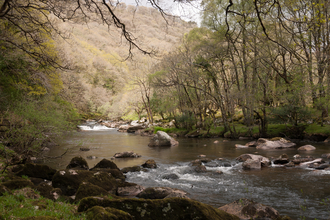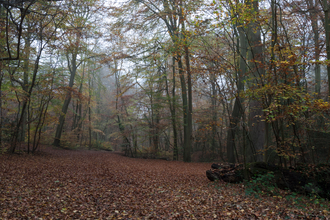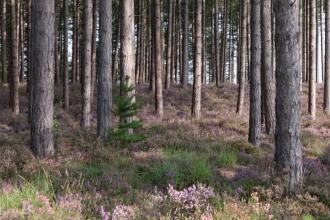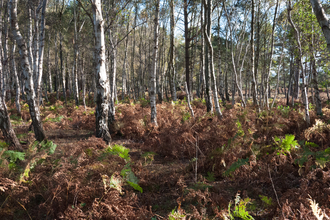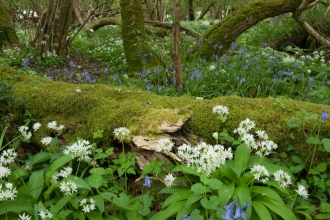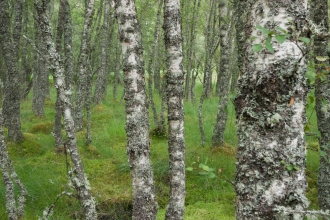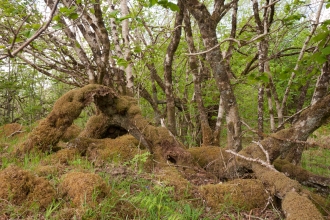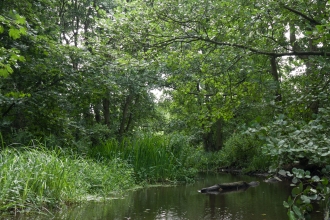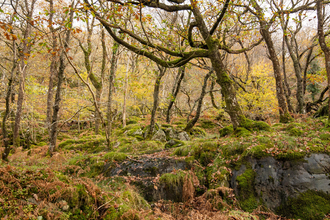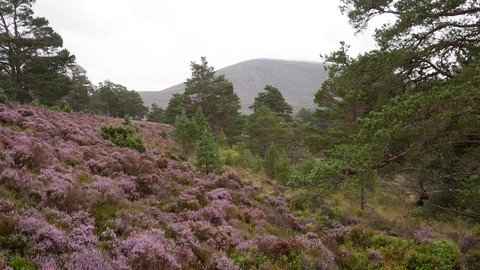
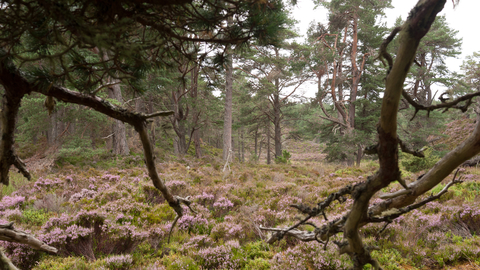
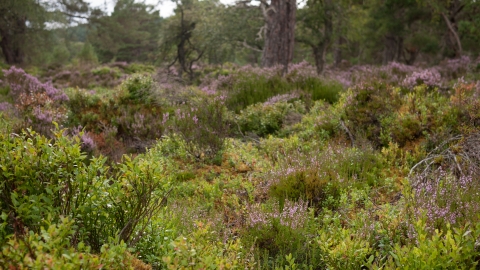
Caledonian forest
What is it?
Caledonian forest is limited to Scotland, and is our only native pine forest. It has an open canopy of Scots pine over juniper and a thick ground flora of heather, bilberry and cowberry with small cow-wheat and wavy hair-grass. In the milder, wetter west, the canopy is more diverse with more oak, holly, birch and rowan. It grows on soils poor in nutrients, from valley bottoms up to about 650m.
Why is it like this?
Pine was one of the first species to colonise the Highlands after the last ice age. In the Highlands, the harsh climate meant that, whereas further south pine was replaced by broadleaved species, here some 1.5 million hectares of predominantly pine wood persisted. However, felling and climatic changes during the Neolithic period (around 4000 years ago) started to reduce the area. This continued, intensifying with increases in sheep farming following the removal of crofters in the 18th and 19th centuries and the development of red deer stalking, until only isolated areas were left in remote locations.
Timber management and grazing are the key factors shaping Caledonian forest today. Many stands are quite even-aged, a result of timber extraction and the prevention of regeneration, while sparser areas with older, larger trees can result from thinning. It can be hard to distinguish natural forest from planted areas. Pine regenerates readily if grazing pressure is not too high, and natural transitions to surrounding heathlands and wetlands are widespread. However, a natural tree line is very rare, and the upper limit of the habitat is generally dictated by grazing pressure rather than climate.
Distribution in the UK
Caledonian forest is an oceanic version of the boreal forest found around the globe at high latitudes. There are fewer than 100 sites in the central and north-east Grampian mountains and northern and western Highlands; these cover about 17,900 ha.
What to look for
Caledonian forest is home to some of our most charismatic species. Although wild cats are unlikely to be seen, just knowing they are present adds to the wild feel of the habitat. Pine martens are more readily spotted, generally at dedicated feeding stations, and red squirrels are relatively easy to find. Look for characterful old “granny” pines growing in more open conditions - check the deep crowns for crossbills (including the endemic Scottish crossbill – our only endemic bird). Crested tits like holes in standing deadwood, while capercaillie (the world’s largest grouse, reintroduced in the 19th century) is found in old forest with dense undergrowth. Rare plants can be hard to spot, but a bit of effort may be rewarded with a sighting of twinflower, creeping lady’s-tresses or one-flowered wintergreen. Look out for thatched mounds of pine needles indicating the presence of wood ants (seven species can be found in Caledonian forest). There are also a number of hoverflies, beetles and flies (such as the bumblebee robberfly, which relies on dead pine) with restricted distributions. Tooth fungi are particularly associated with Caledonian forest.
Conservation
The area of Caledonian forest is currently limited by grazing pressure (both red deer and domestic livestock) while past and existing timber management influence the structure. Some areas are managed specifically for wildlife (e.g. with light grazing to optimize conditions for key species while allowing regeneration) while others support commercial timber enterprises. There are both long-standing and more recent re-afforestation projects, and also interest in eventually restoring some of its missing species - beaver, wild boar and even lynx and wolf.

